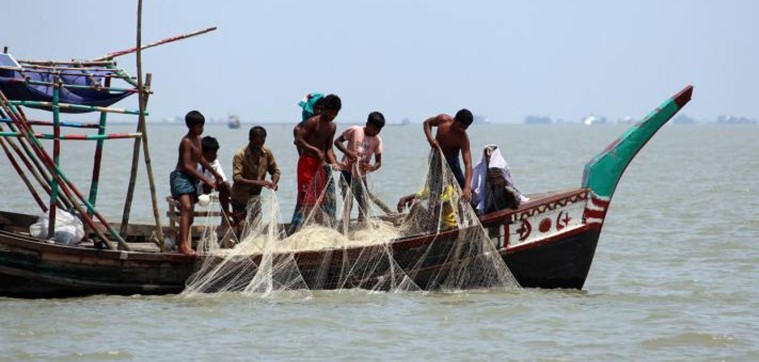Padma’s hilsa is almost proverbially known as the tastiest of hilsa to be found. A group of scientists, however, said that most of the country’s hilsa comes from the Meghna and these fish available from August to November are known for both taste and nutrition not only in the country but also worldwide.
A team of Bangladeshi researchers revealed this after analyzing the data obtained from the National Ocean Research Organization (NOA) of the United States from 1998 to 2018. The study was jointly conducted by four researchers from the Institute of Marine Sciences of University of Chittagong and the Department of Oceanography of Shahjalal University of Science and Technology.
Only 2 per cent of hilsa in Bangladesh comes from the Padma. However, they are small in size. Most of the large and flavorsome hilsa are found in the Meghna Basin
It is said that the weight and taste of this fish is usually less when it lives in the sea because there is less food and plants needed for the fish’s growth. Food is more abundant in rivers and estuaries especially in the Meghna Basin. When travelling from the sea to the river, hilsa swims up to 71km per hour against the current. It also consumes food to gain strength on the way. Hilsa eats a lot of plant particles in the Meghna Basin and produces a lot of fatty acids and Omega-3 in its body. Those two ingredients are very nutritious and delicious at the same time. These two nutrients are very useful for human beings, including in controlling high blood pressure and resisting viral infections.
According to the study, only 2 per cent of hilsa in Bangladesh comes from the Padma. However, they are small in size. Most of the large and flavorsome hilsa are found in the Meghna Basin.
The study recommends strict control of jatka catching in the Meghna Basin, reduction of pollution and ban on ‘behundi’ nets. It has been said that the amount of hilsa caught in Bangladesh has a financial value of two billion dollars, which is about 160 billion taka. About 500,000 fishermen of Bangladesh make a living from hilsa fishing while 2.5 million people are engaged in the markets.
The study analysed the amount of plant and animal particles in an area of 3.6 million square kilometers in the Bay of Bengal.
Despite plenty of food we may not be able to protect the fish due to pollution and rising of shoals in Meghna estuary. We must dredge the river for the movement of hilsa. Pollution must be reduced,too
“However, we learned from the study that we have to allow only small marine vessels to catch hilsa off the coast,” he added.
Hilsa fishing will be closed from 14 October to 4 November for the breeding season.
As is common in food chains, big fishes eat small fishes. But the study found that 97 to 98 per cent of the hilsa’s diet is plant particles. Apart from Meghna Basin, the food is most found in the Irrawaty estuary of Myanmar. The amount of hilsa food is the lowest in the deep sea. The main reason for the high amount of plant particles in the Meghna is the particles flown through the Ganges from the Himalayas and the Brahmaputra from Tibet throughout the year. Hilsa therefore roam the estuary of the Meghna for the food during the big time of the year. Also the fish do not go very far beyond 250 kilometers of the Bangladesh coast due to food scarcity.
According to the research data, the abundance of hilsa food has been seen more in the two seasons. Of these, 80 per cent hilsa was caught from August to November. Another season starts from January till March. Jatka hilsa grows during the times in between.
Anisur Rahman, chief scientific officer at the Bangladesh Fisheries Research Institute and a hilsa researcher, told Prothom Alo, “Despite plenty of food we may not be able to protect the fish due to pollution and rising of shoals in Meghna estuary. We must dredge the river for the movement of hilsa. Pollution must be reduced,too.”

